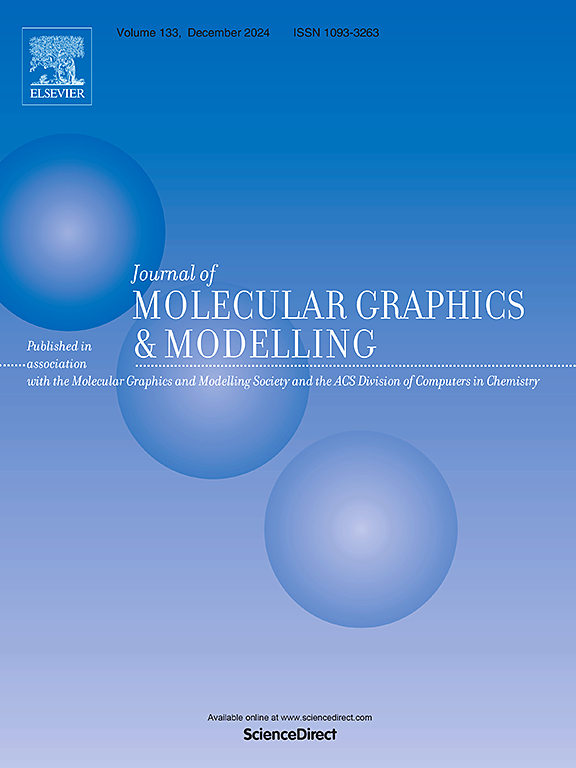Protein-based QM-CGMM
IF 3
4区 生物学
Q2 BIOCHEMICAL RESEARCH METHODS
引用次数: 0
Abstract
We present an approach to Coarse Grain (CG) the Molecular Mechanics (MM) region in a thermodynamically consistent approach when the region is a protein backbone. This approach is achieved, via using 4 beads on each amino acid residue to replicate the electrostatic field that it generates, followed by connecting them via a heterogeneous Elastic Network Model (heteroENM) force-field. We subsequently treat the boundary between the QM and CGMM regions using appropriate Lennard-Jones parameters. We apply this procedure to the classic Chorismate Mutase system, where the enzyme backbone in the MM region catalyzes the Claisen rearrangement in the QM region using Transition-Tempered metadynamics (TTMetaD) to obtain a converged Potential of Mean Force (PMF). The CGMM reveals a free energy barrier similar to the experimental value. This work demonstrates the potential of utilizing a CGMM forcefield to capture all-atom thermodynamic properties at a reduced cost.

蛋白质QM-CGMM
我们提出了一种方法来粗粒(CG)的分子力学(MM)区域在热力学一致的方法,当该区域是一个蛋白质骨干。这种方法是通过在每个氨基酸残基上使用4个微珠来复制它产生的静电场,然后通过异质弹性网络模型(heteroENM)力场将它们连接起来实现的。随后,我们使用适当的Lennard-Jones参数处理QM和CGMM区域之间的边界。我们将此方法应用于经典的Chorismate Mutase体系,其中MM区域的酶主链利用过渡调节元动力学(TTMetaD)催化QM区域的Claisen重排,从而获得收敛的平均力势(PMF)。CGMM显示出与实验值相似的自由能势垒。这项工作证明了利用CGMM力场以较低的成本捕获全原子热力学性质的潜力。
本文章由计算机程序翻译,如有差异,请以英文原文为准。
求助全文
约1分钟内获得全文
求助全文
来源期刊

Journal of molecular graphics & modelling
生物-计算机:跨学科应用
CiteScore
5.50
自引率
6.90%
发文量
216
审稿时长
35 days
期刊介绍:
The Journal of Molecular Graphics and Modelling is devoted to the publication of papers on the uses of computers in theoretical investigations of molecular structure, function, interaction, and design. The scope of the journal includes all aspects of molecular modeling and computational chemistry, including, for instance, the study of molecular shape and properties, molecular simulations, protein and polymer engineering, drug design, materials design, structure-activity and structure-property relationships, database mining, and compound library design.
As a primary research journal, JMGM seeks to bring new knowledge to the attention of our readers. As such, submissions to the journal need to not only report results, but must draw conclusions and explore implications of the work presented. Authors are strongly encouraged to bear this in mind when preparing manuscripts. Routine applications of standard modelling approaches, providing only very limited new scientific insight, will not meet our criteria for publication. Reproducibility of reported calculations is an important issue. Wherever possible, we urge authors to enhance their papers with Supplementary Data, for example, in QSAR studies machine-readable versions of molecular datasets or in the development of new force-field parameters versions of the topology and force field parameter files. Routine applications of existing methods that do not lead to genuinely new insight will not be considered.
 求助内容:
求助内容: 应助结果提醒方式:
应助结果提醒方式:


